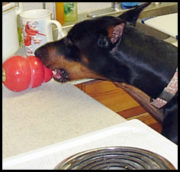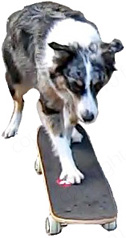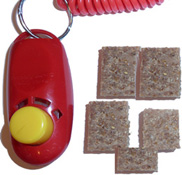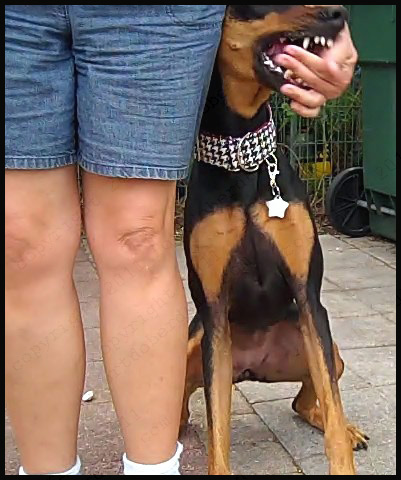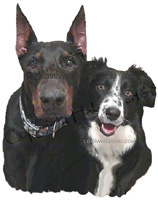While you’re training good behavior, or when you are not able to control your dog’s behavior, then you’ll need to manage it. If your dog surfs the counters and grabs what he can, for example, manage this situation by keeping the counters free of enticement. When your dog does get something from the counter, it’s a reward to him for his efforts as a counter surfer. When you come home to a clean counter and nothing chewed up, it’s a {Read More}
Dog Training Food: Why Have Variety?
Having various flavors and desirability of dog training food at-the-ready is imperative when training a dog. Because, when working on a behavior that’s difficult for a dog to learn, getting and keeping a dog’s complete attention and willingness to move forward will be more challenging. That’s when the steak-level training food is brought out with the well-vetted training plan. For example, when working with a dog to step onto a skateboard as he advances on the training plan will require {Read More}
Behavior Markers in Dog Training
When training with a clicker, the sound of the “click” marks the moment the dog executes a behavior the trainer is seeking. That sound communicates to the dog he succeeded and will be rewarded. Every time a trainer clicks, she must give the dog reinforcement, generally, training food. The click is the secondary reinforcer, which announces the food, which is the primary reinforcer, is to come. If a trainer accidentally clicks at the wrong time, it’s important she still give {Read More}
Chomping The Hand That Feeds Her
THIS HURTS! Giving a chomper food is painful. My dog Raven needed to take a step back in training for me to re-teach her how to take training food with ease. So I stopped training the behavior we were working on, and for a couple of sessions, we worked on taking the dog training food nicely and in a polite manner minus any pain to my palm. I wiped some chicken fat on my palm, and offered her my palm. {Read More}
Charging a Marker – Clicker Training
A marker, in dog training, is communication to your dog at the instant your dog offers the behavior you wanted. By using a marker, you are telling the dog, “Yes! Right there! That’s the behavior I want!” So it’s a very specific moment, an instant in a chain of action that we want to communicate to the dog, “You’re getting a food reward for THAT.” Markers, therefore, and not used for broad type behaviors like calling a dog. No. They {Read More}
